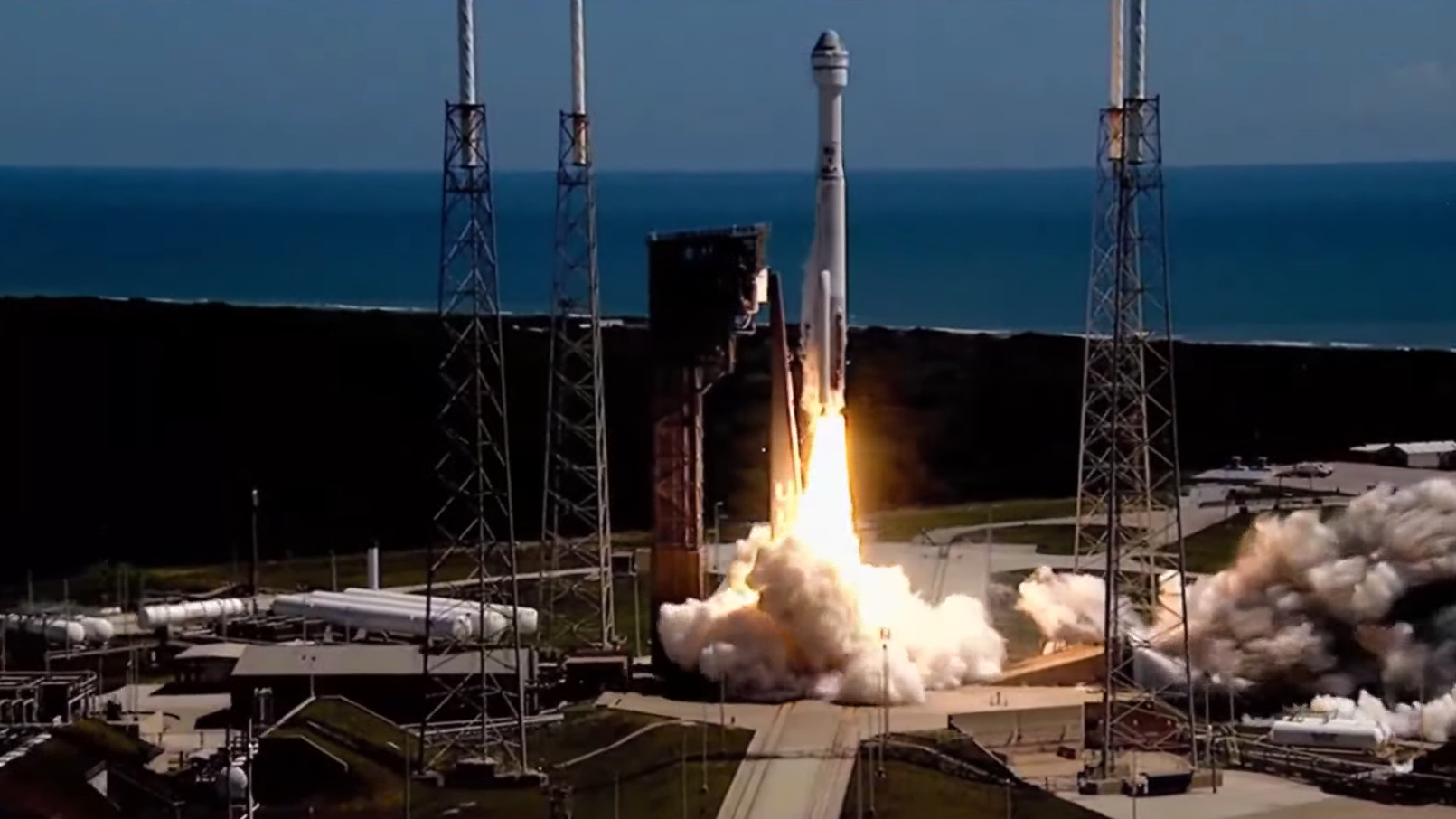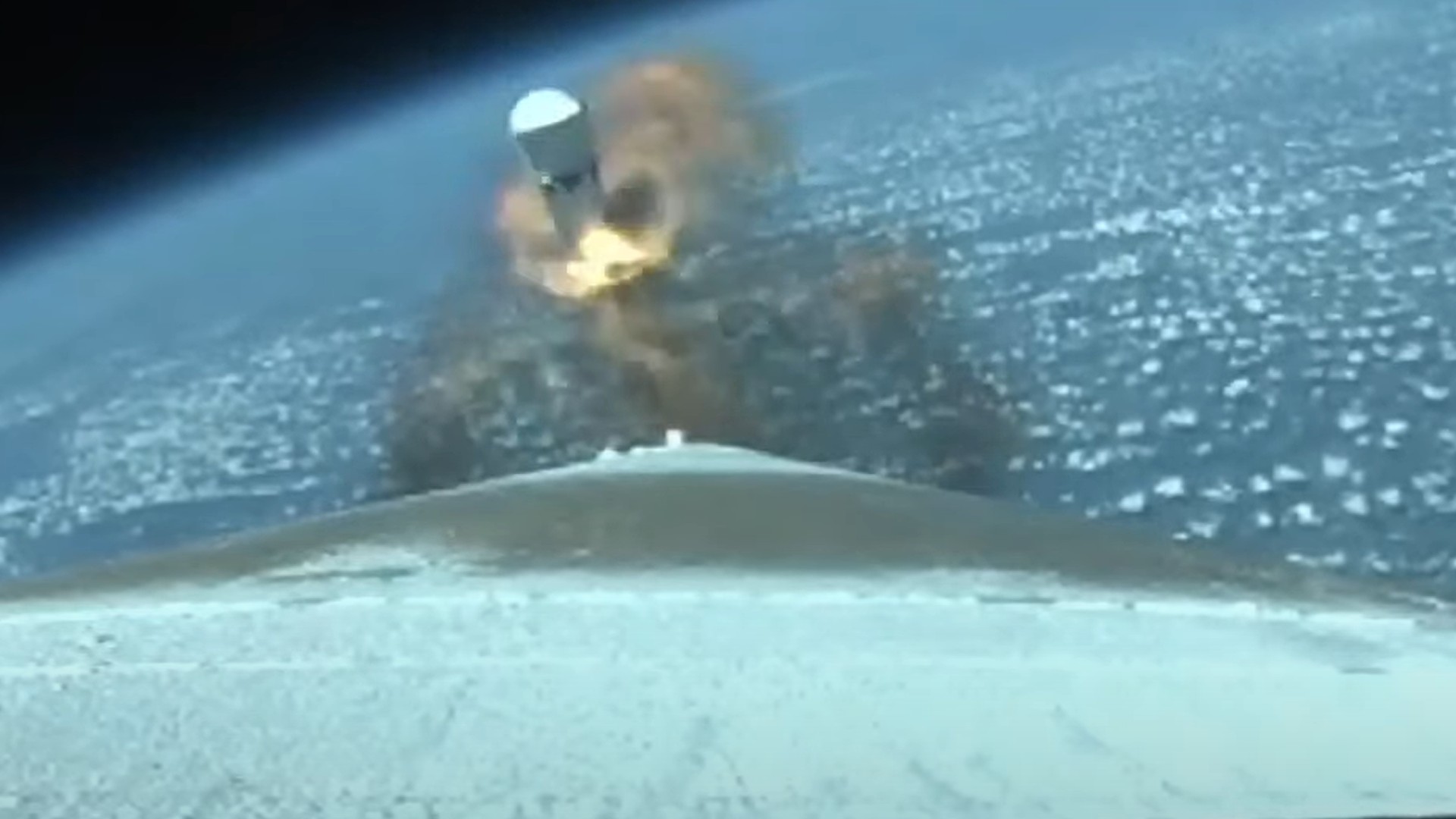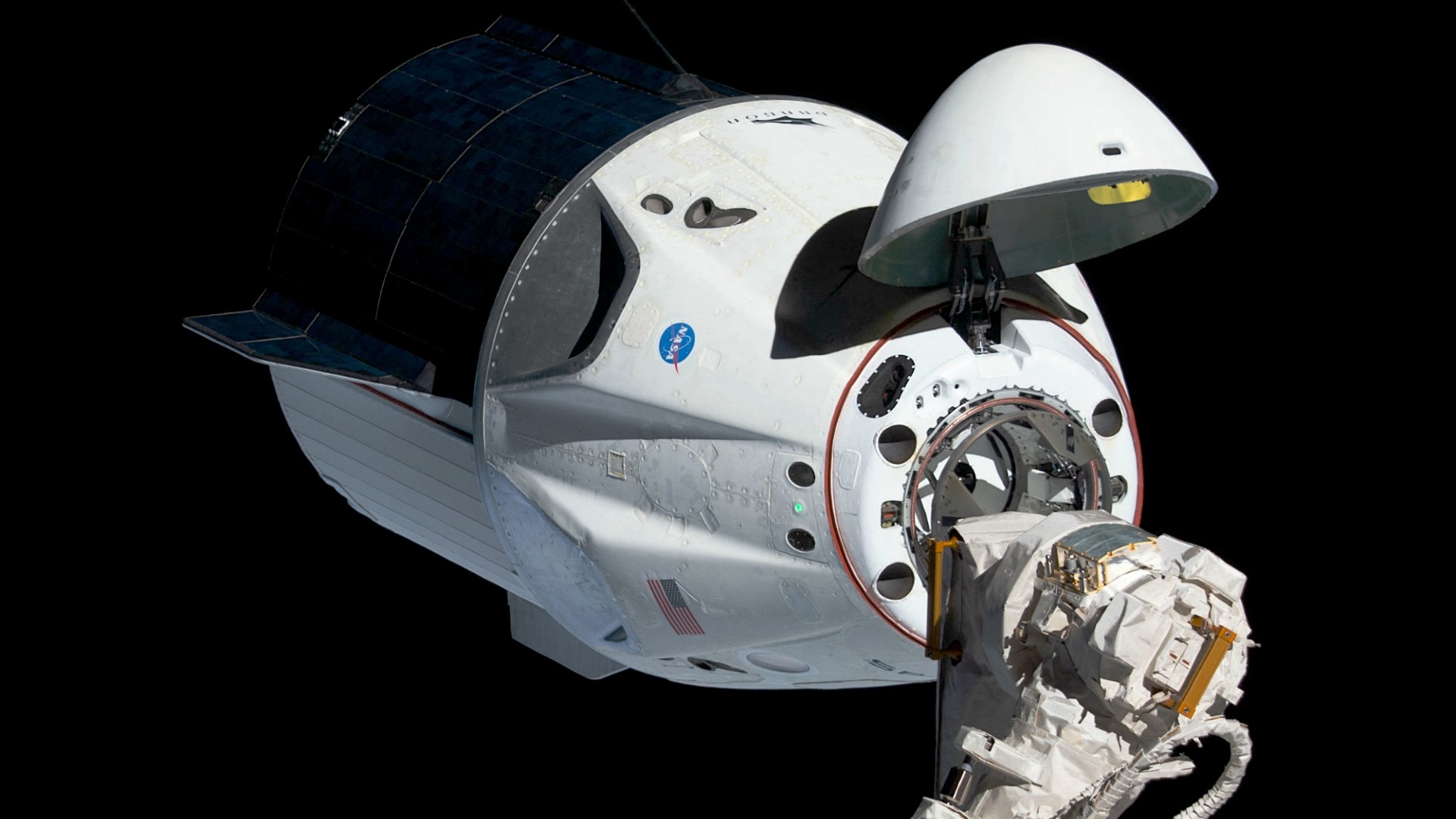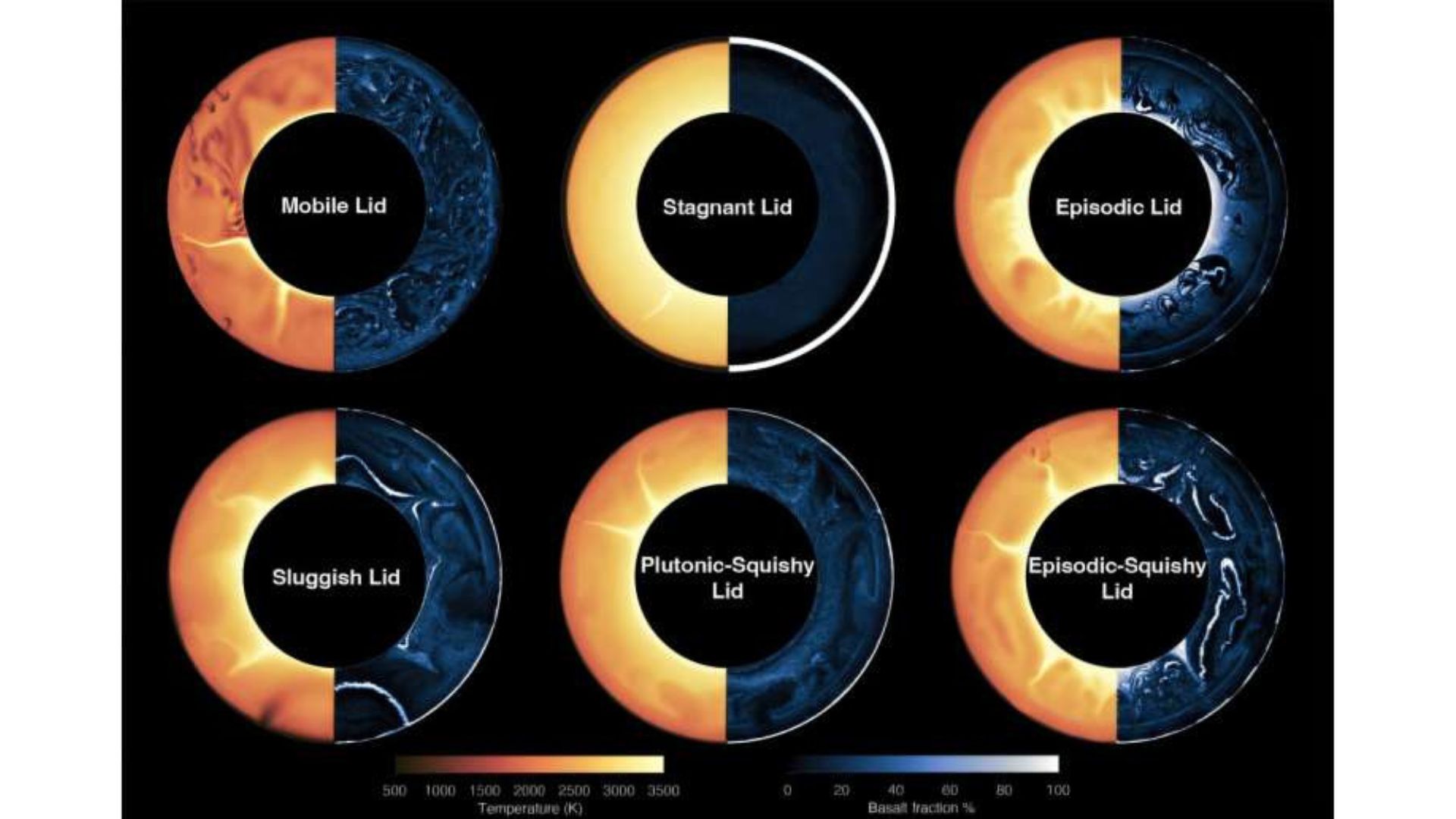Boeing's Starliner launches astronauts for 1st time in historic liftoff (photos, video)
Boeing's Starliner's first-ever astronaut mission is underway.
Starliner, Boeing's new astronaut taxi for NASA, soared into space today (June 5) from Launch Complex 41 at Cape Canaveral Space Force Station, notching a huge milestone after nearly two decades of commercial crew planning.
Veteran NASA astronauts Barry "Butch" Wilmore and Suni Williams, both former U.S. Navy test pilots with 11,000 flight hours between them, are riding aboard the Boeing Starliner capsule, which launched today at 10:52 a.m. EDT (1452 GMT) atop a United Launch Alliance's (ULA) workhorse Atlas V rocket. As it was for Starliner, this was also the first time astronauts have launched atop an Atlas V in its 22-year flight history.
Related: Boeing Starliner 1st astronaut flight: Live updates
"We all know that when the going gets tough, as it often does, the tough get going, and you all have," Wilmore said while waiting on the pad for liftoff. "Let's get going, let's put some fire in this rocket. "
"Let's go Calyspo, take us to space and back," pilot Sunita Williams said just minutes before launch, referring to the name of the Starliner capsule.
Starliner is headed toward the International Space Station (ISS), where Wilmore and Williams will spend about eight days putting the spacecraft through a series of tests toward operational crew certification. Rendezvous is scheduled for Thursday (June 6) around 12:15 p.m. EDT (1615 GMT). You can follow the mission with our Starliner live updates page.
Breaking space news, the latest updates on rocket launches, skywatching events and more!
The fiery launch brings NASA within reach of a goal the agency set more than a decade ago: getting two American commercial vehicles up and running for astronaut missions to the ISS. It's been a long road to get here, as the roots of this goal go back to at least 2006.
The newly launched Starliner mission, a roughly 10-day jaunt known as Crew Flight Test (CFT), was originally scheduled to lift off on May 6. But that attempt was scrubbed about two hours before launch, when team members noticed a "buzzing" valve on the Atlas V's upper stage.
ULA decided to replace the valve, which required rolling the rocket off the pad and back to the company's vertical integration facility. That work delayed the planned liftoff until May 17, but then another issue arose: a slight helium leak in one of the reaction-control thrusters in Starliner's service module.
The mission team took more time to analyze the leak and its potential consequences, ultimately deeming it a minor issue and clearing CFT for a planned June 1 liftoff. "Sometimes, for spaceflight, you plan for contingencies, and you design the vehicle to have margin," Steve Stich, NASA's Commercial Crew Program manager, said during a pre-launch press briefing on Friday (May 31).
"We have margin in the helium tank," he added. "We could handle a leak that's 100 times worse than this. So [...] we concluded that the smartest thing to do was to go fly the mission, and we could fly it safely."
The June 1 attempt, however, was aborted just minutes before liftoff thanks to a failed power distribution source in the ground equipment. The mission team replaced the faulty gear, setting CFT up for its launch today.
CFT aims to check out Starliner thoroughly ahead of certifying the spacecraft for longer missions. Williams and Wilmore will do some manual flying, test emergency scenarios like losing communications or power, and do a lot of debriefing to ensure that future Starliner crews know what to expect.
If all goes well on CFT, Starliner will carry its first astronaut crew for about six months to the ISS, perhaps as early as 2025. Starliner-1, that first operational flight, will carry NASA astronauts Mike Fincke and Scott Tingle along with Canadian Space Agency astronaut Josh Kutryk. The Starliner-1 crew is already deep in training, and Fincke served as backup for CFT as well.
Related: The ISS has a urine pump problem. Boeing's Starliner will flush it out.
Commercial crew's genesis extends back to the commercial cargo program, which was first funded in 2006, as NASA used similar models to get private robotic and crewed vehicles running to the ISS. Until then, only government programs had sent supplies to the orbiting lab; agency officials turned to industry to nurture those companies' independence and resilience while, ideally, saving on taxpayer cost.
Commercial cargo nurtured the development of SpaceX's cargo Dragon and Northrop Grumman's Cygnus vehicle, both of which have been flying robotic resupply missions to the ISS for more than a decade, and will soon send Sierra Space's Dream Chaser to space as well. The success of cargo development helped NASA award its first commercial crew contracts in 2010, collectively totaling $50 million (worth about $72 million in 2024 dollars) to five companies.
The quintet included Blue Origin, Boeing, Paragon Space Development Corp., Sierra Nevada (now Sierra Space) and ULA, each of which received support under CCDev-1 (Commercial Crew Development-1) for several human spaceflight technologies. ULA's funding helped certify the Atlas V for human missions.
Between 2010 and 2014, several new rounds of commercial crew funding brought extra support to Boeing, SpaceX and a range of other companies. CCDev-2, announced in April 2011, awarded a total of $270 million to Blue Origin, Boeing, Sierra Nevada and SpaceX. (Boeing got $92 million in this round for Starliner, while SpaceX's $75 million went toward the development of Crew Dragon.)
The funding increased with Commercial Crew integrated Capability (CCiCap) in August 2012, as NASA also narrowed the field to three companies: Sierra Nevada received $212 million for Dream Chaser, while Boeing and SpaceX got $460 million and $440 million, respectively.
SpaceX and Boeing then received the last major contract for final development work, known as Commercial Crew Transportation Capability (CCtCap), in September 2014. Boeing's deal was worth $4.2 billion back then, while SpaceX got $2.6 billion. The money was also meant to cover six operational crewed flights to and from the ISS.
As is common with big spaceflight projects, lots of logistical and technical obstacles arose for both companies' spacecraft. NASA wanted the two CCtCap awardees to fly astronauts in 2017, but SpaceX's first such test flight launched in 2020, while Boeing's was delayed even longer, until today.
Lots of things contributed to the wait. Congress repeatedly gave less money than the White House and NASA requested for commercial crew, and technical obstacles arose. Boeing's solutions, however, took more flights and more time than SpaceX's.
SpaceX has sent 12 crewed missions to the ISS to date, including the 63-day Demo-2 test flight with NASA astronauts Bob Behnken and Doug Hurley in 2020. Their mission had been expected to launch in 2019, shortly after an uncrewed Crew Dragon successfully reached the ISS for the first time that March. But only a month later, that Dragon exploded during a ground test of its launch-abort system. SpaceX, as one would expect, put off human launches until it could address the mishap cause, which turned out to be a faulty valve.
Starliner's issues were more complex. Its own first uncrewed mission, called Orbital Flight Test (OFT), never reached the ISS as planned in December 2019. The capsule's timing system got confused, and Starliner became stuck in an orbit that made it impossible to rendezvous with its destination. The investigation was complex and lengthy, requiring dozens of fixes, and the pandemic's arrival in early 2020 further delayed schedules due to supply chain problems and social distancing requirements.
Starliner's next uncrewed flight met up with the ISS flawlessly in May 2022, but its road to crewed flights faced another obstacle in 2023. Late in CFT's training flow, new issues with the spacecraft were discovered, requiring extra fixes ahead of flight. The most pressing concerned the main parachutes (which carried less load than engineers thought) and the capsule wiring (which, as it turned out, was largely wrapped in flammable P213 tape).
The CFT astronauts, and Boeing and NASA, have repeatedly said these issues are behind them, although new issues could arise during CFT. Wilmore has also downplayed CFT as being the one thing determining Starliner's success; he frames all stages of development for astronauts as "vitally important."
"This is human spaceflight," Wilmore explained to reporters in a livestreamed press conference on April 25, when he and Williams arrived at KSC for quarantine, training and launch preparations ahead of the May 6 attempt. "You know that adage you've heard since Apollo 13: failure is not an option. And that has nothing specifically to do with Boeing or this program. That's all things that we do in human spaceflight."
In addition, a failure of a parachute to fully open during Blue Origin's recent NS-25 suborbital crewed launch prompted Boeing to double-check Starliner’s own parachute systems.
"Starliner uses some similar components to [the New Shepard] parachute system," Stich explained during the May 31 briefing. According to Stich, Blue Origin provided NS-25 flight data with NASA, SpaceX and Boeing, allowing engineers to ensure the functionality of specific components. And, after examining the data, Stich said it was determined Starliner was "good to go fly."
Related: 1st Boeing Starliner astronauts are ready to launch to the ISS for NASA (exclusive)
With the ISS expected to continue flying until at least 2030, the plan going forward is for three different spacecraft to carry astronauts to and from the orbiting lab. Aside from Dragon and Starliner, Russia will continue to send cosmonaut-led crews using its Soyuz spacecraft until at least 2028, when the nation's commitment to the partnership is scheduled to expire.
Some NASA astronauts continue to use Soyuz for policy reasons, and also because the space station partners want as many backups as possible in case of technical problems with any one spacecraft.
As for private Starliner astronaut missions aside from NASA obligations for ISS, Boeing officials have said repeatedly that they want to focus on fulfilling their NASA contract first.
In the May 31 briefing, Fincke said that CFT "will help continue the certification process for Starliner, so that Starliner 1, 2, 3, to infinity and beyond, can fly and provide services to the International Space Station, and it’s up to Boeing, but other other missions available out there too."
Besides that, CFT "really is all of our attention at this point," Mark Nappi, Boeing's commercial crew program manager, told reporters on April 25. With at least six more years of ISS flights to plan for, "we've got plenty of time to think about what's after that," he added.

Elizabeth Howell (she/her), Ph.D., was a staff writer in the spaceflight channel between 2022 and 2024 specializing in Canadian space news. She was contributing writer for Space.com for 10 years from 2012 to 2024. Elizabeth's reporting includes multiple exclusives with the White House, leading world coverage about a lost-and-found space tomato on the International Space Station, witnessing five human spaceflight launches on two continents, flying parabolic, working inside a spacesuit, and participating in a simulated Mars mission. Her latest book, "Why Am I Taller?" (ECW Press, 2022) is co-written with astronaut Dave Williams.








